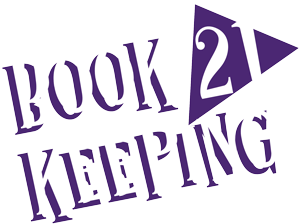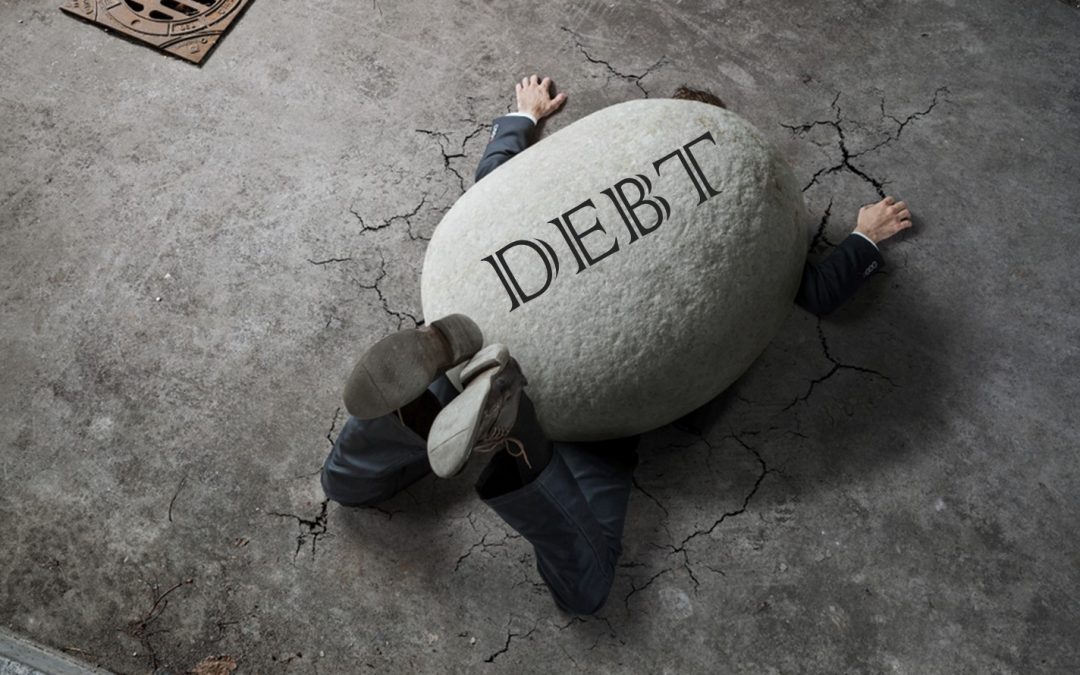Debt Management for Your Small Businesses
Running a debt-free business is a goal for many small business owners. Statistically, it doesn’t come true for almost seven in ten businesses. Nearly 70% of small businesses have outstanding debt. But, contrary to popular belief, having debt isn’t necessarily a bad thing. After all, every business needs financing to grow and stay ahead of the curve. And if a company can’t raise the capital by increasing output or enhancing sales internally (which most small businesses can’t), they must look for financing.
Debt becomes a financial noose when it’s not managed correctly. When business owners take on too much financial liability and don’t have adequate plans in place (or resources) to repay it, things can spiral downwards quite rapidly.
You don’t want to find yourself in that scenario! As a small business owner, you need to learn how to manage your business and personal debt and don’t mix the two. Combining the two is never a smart strategy and usually ends up negatively impacting you personally as well as your businesses.
What is Debt Management?
Debt management for your business starts with understanding the different kinds of debts and their financial repercussions (if the debts are not paid in time). But before that, what do I mean by debt management?
Debt management is the process of containing your debt to keep payments manageable. You can either start working on your debt yourself, with a partner, or with an advisor. The debt doesn’t have to grow out of hand to require management. The earlier you start, the better you might be able to manage your debt.
Debt management can also mean you’re negotiating with your lender(s) on the best course of action for repaying your outstanding debt. It may include spreading repayment over a more extended period, instead of a higher interest rate so that both you and the lender can get something positive out of the arrangement.
Simply put, debt management, whether undertaken by a borrower alone or as a negotiation between the borrower and lender, is the best way to either get rid of a business’s (or personal) debt or bring it under control.
Types of Small Business Debts
You don’t need to take out a specific business loan to incur debt. Unpaid credit cards are also a kind of debt. I even consider unpaid invoices a form of debt.
The main difference between the two is interest accumulation.
Many large businesses and government contractors still work on the 90-day invoice period, and if you have 90 days to pay someone back, you can afford to wait without accumulating any interest. However, most small businesses that you work with will want payment within 30 days.
If you have a substantial amount of credit card debt and are circumventing it by making only minimum payments, you are essentially growing your debt.
Other types of debt include:
Revolving Line of Credit: Instead of borrowing a lump-sum amount at once, you can apply for a line of credit. Once approved, you have access to a set amount of funds that you can draw upon whenever you need it. The good thing is that you only have to pay interest on the amount you take, and the interest rates are usually low. As an unsecured loan, you can only apply for a limited amount, and you must have a stellar credit history to get a reasonable rate.
Business Loans: It’s the typical lump-sum loan that must be paid back over time. You can fund a decent expense through a one-time business loan, but you’ll have to pay it back within the duration and pay interest on the whole amount you borrow. These loans can be short-term and long-term in nature, and the interest rate may be influenced by factors like business/personal credit score, assets, and revenue history.
Secured Loan: Secured loans are available in a variety of shapes to small businesses. Some lenders prefer tangibles like physical assets, equipment, and in some cases, a lien on a business-owned property. Other lenders prefer lending against accounts payable, known as vendor financing. Another variation of this type of loan is accounts receivable financing.
One of the variables that’s the same in almost all financing types is a risk. The riskier you are as a borrower, the harder it is for you to secure a decent loan with favorable terms. On the contrary, if you have a solid credit history, you may get reasonable rates and terms.
Tips for Managing Small Business Debt
A few tips that can help you manage your business debt more efficiently are:
1. Don’t write financing entirely off. Some small business owners think that taking on any kind of loan or applying for funding is risky and undesirable. This belief stifles your ability to grow and severely limits your options. Very few businesses can earn enough to pay for their growth every step of the way. Besides, if you never apply and get approved for financing, it portrays a gloomy picture that you don’t believe in your business or your ability to pay back a loan. It also shows you are not willing to take risks. If you aren’t prepared to take risks, you shouldn’t be in business!
2. Never take on more than you need. Many business owners tend to go for a heftier amount than they really need, just in case. They are usually too zeroed in on meeting a financial challenge, and that they’ll think about repayment later.
That’s a dangerous way to incur debt.
First, if you seem too hasty and willing to pay a premium for a higher amount, lenders might take advantage of your desperation. Secondly, if you don’t have a plan to pay back the debt, you sacrifice your business’s future and your profits. In this situation, most likely, the monthly installments will be significantly more than what you have left after operational expenses and your own profit/salary. You will have to cut costs which, if done thoughtlessly, will damage your business.
3. Prioritize which debt to pay first if you have incurred debt from multiple sources (for example, a line of credit, credit card, and unpaid invoices). You should prioritize paying off the debt that’s increasing.
I bet you think unpaid credit cards that are accumulating interest fit this bill. But it’s not that simple.
If you focus more on interest-laden debts and keep delaying other obligations (like your invoices), you might damage your reputation and business relationships. By taking inventory of different kinds of debt you need to pay off, you find out which debt has the highest chance of forcing your business into bankruptcy. Focus on that debt first.
4. Never take on more debt to pay for your current debt. You get trapped in a vicious cycle and run your business down to the ground. If your situation becomes that desperate, consider raising capital from other sources, like a Family loan or liquidating business assets. Once you’ve taken care of your debt, you can focus on cost-cutting initiatives or alternate revenue generation options.
5. Consider debt consolidation with extreme caution. It might be a good idea if you have too many high-interest loans. You can streamline your payments over a more extended period and make your monthly payments more affordable (but you do end up paying more overall). Be sure to work with a company that has a good reputation. Too-good-to-be-true debt relief programs are the top-ranking consumer complaint with the Federal Trade Commission! If they are eager to take on your debts despite your weak business profile, it is a big red flag.
6. When you are considering a renegotiation of your payment plan with your lender, talk to a consultant first. The advisor will help you figure out how much you can afford to pay back and what terms would be best for you. Then, when you are negotiating, you can fight for those that offer you the best chance of paying your debt.
7. Instead of taking on more debt to cover the existing debt, consider bringing in a partner or partner(s) into your business. You may have to give up control (up to an extent), but you can get out from under mounting debt that’s stifling your business.
8. Understand which financing option is best for you. If you are in a line of business where you have to make an immediate purchasing decision, a line of credit might be your best option. If you have a one-time expense, as an expansion, a one-time loan may be better because you’ll work with a fixed timeline.
9. Try not to mix business and personal debt. Many sole-proprietors find this extremely difficult to do. If you are taking out a substantial loan, you may want to incorporate your business beforehand to limit your personal liability and seizure of personal assets if you default.
10. Plan your loan payments even before you apply for a loan. Most lenders have calculators you find out how much your monthly payment would be for a specific loan amount. If your monthly earnings after payment of operating expenses are not enough to cover loan repayments, you should have a way of making up the difference. You may have to slash your profits/salary or reduce on-going business expenses to ensure that you have enough money for repaying the loan.
Conclusion
Debt is an essential part of doing business. But it doesn’t have to be a burden. The best way to manage debt is planning before you need to (or want to) incur any debt.
Most importantly, you should work on your credit score. Using a credit card or a line of credit sparingly and paying it off on time helps you build a stellar credit history. An excellent credit score is an asset for whenever you may need larger financing.
Without a good credit history, you’ll only find bad terms and high-interest rates available to you. Not the best for making managing your debt any easier.
Do you wonder how you can get control of your debt so you don’t have a financial heart attack? Learn how you can destroy your debt with Profit First. Nearly immediately after its introduction, Profit First became the most popular book of all time on how to systematically (and easily) grow profits in any business. The strategies outlined will absolutely help you increase your company’s profits. Profit First became a TED talk, had an entire segment on MSNBC, was written about in Forbes, and was featured in AccountingToday all in the same week.
Download the “Core Principles” chapters here. I know you’ll find them to be a highly enlightening and fun read!

